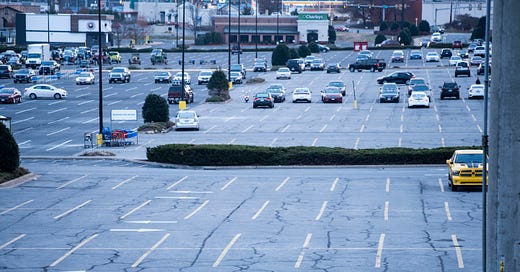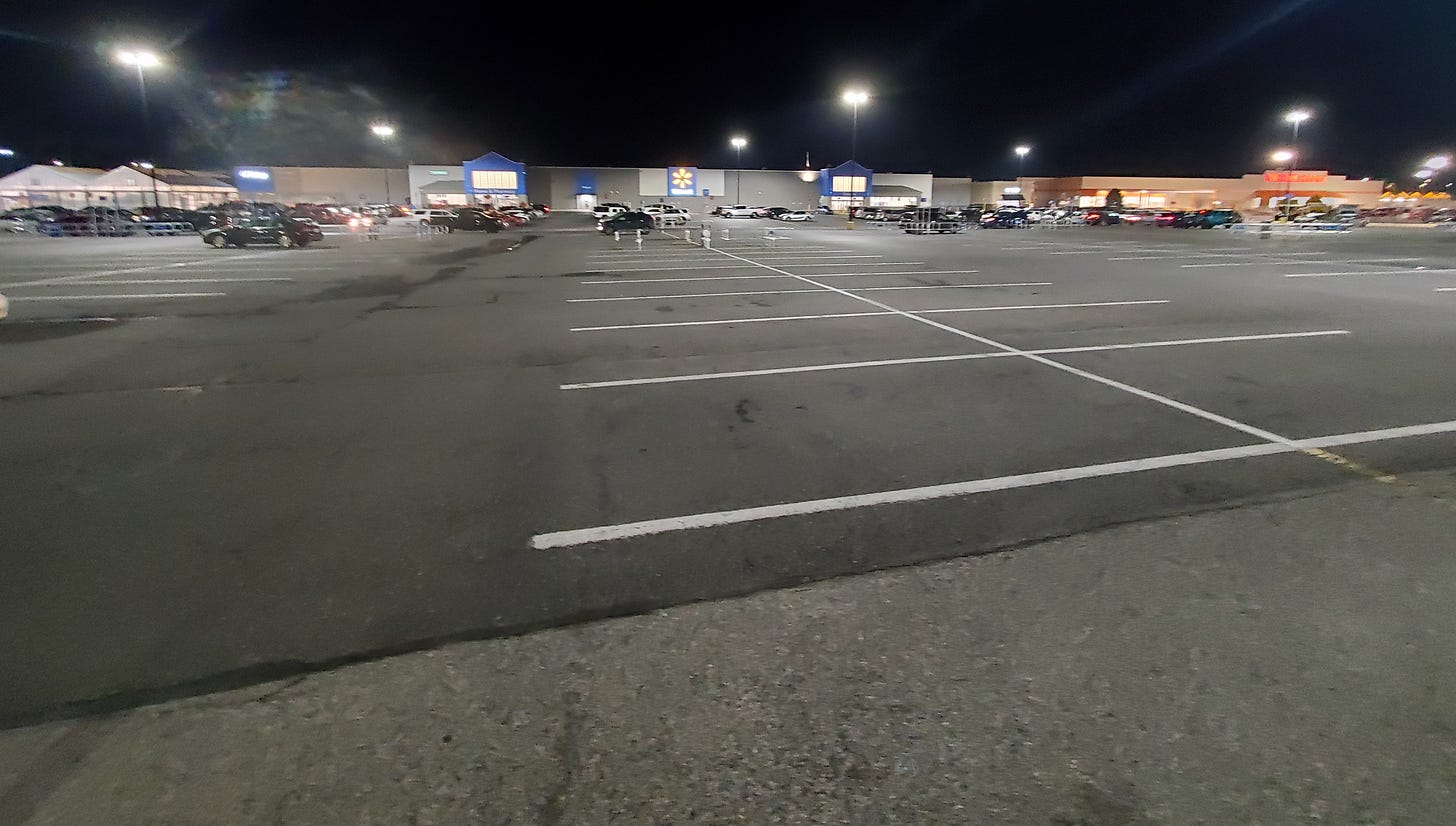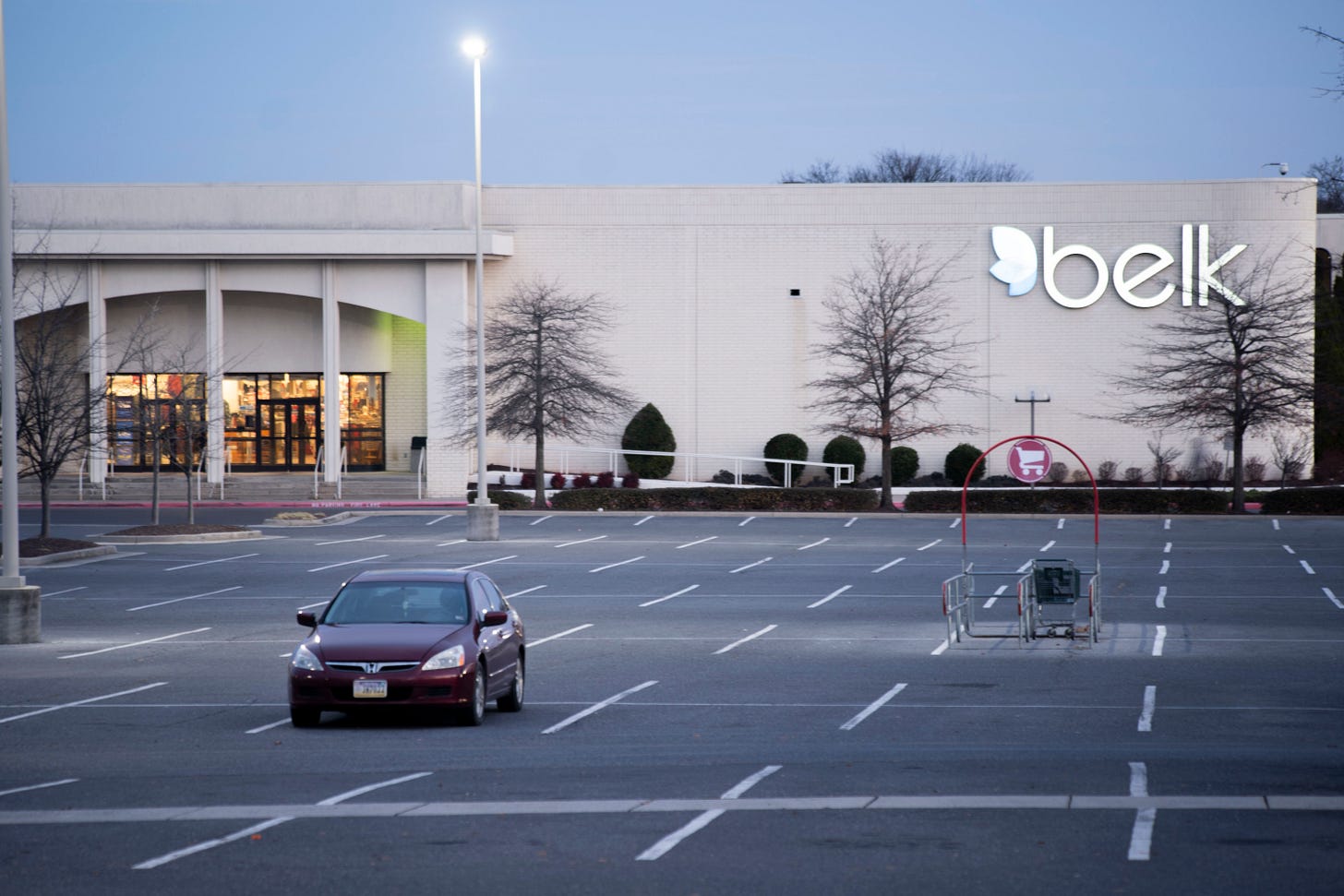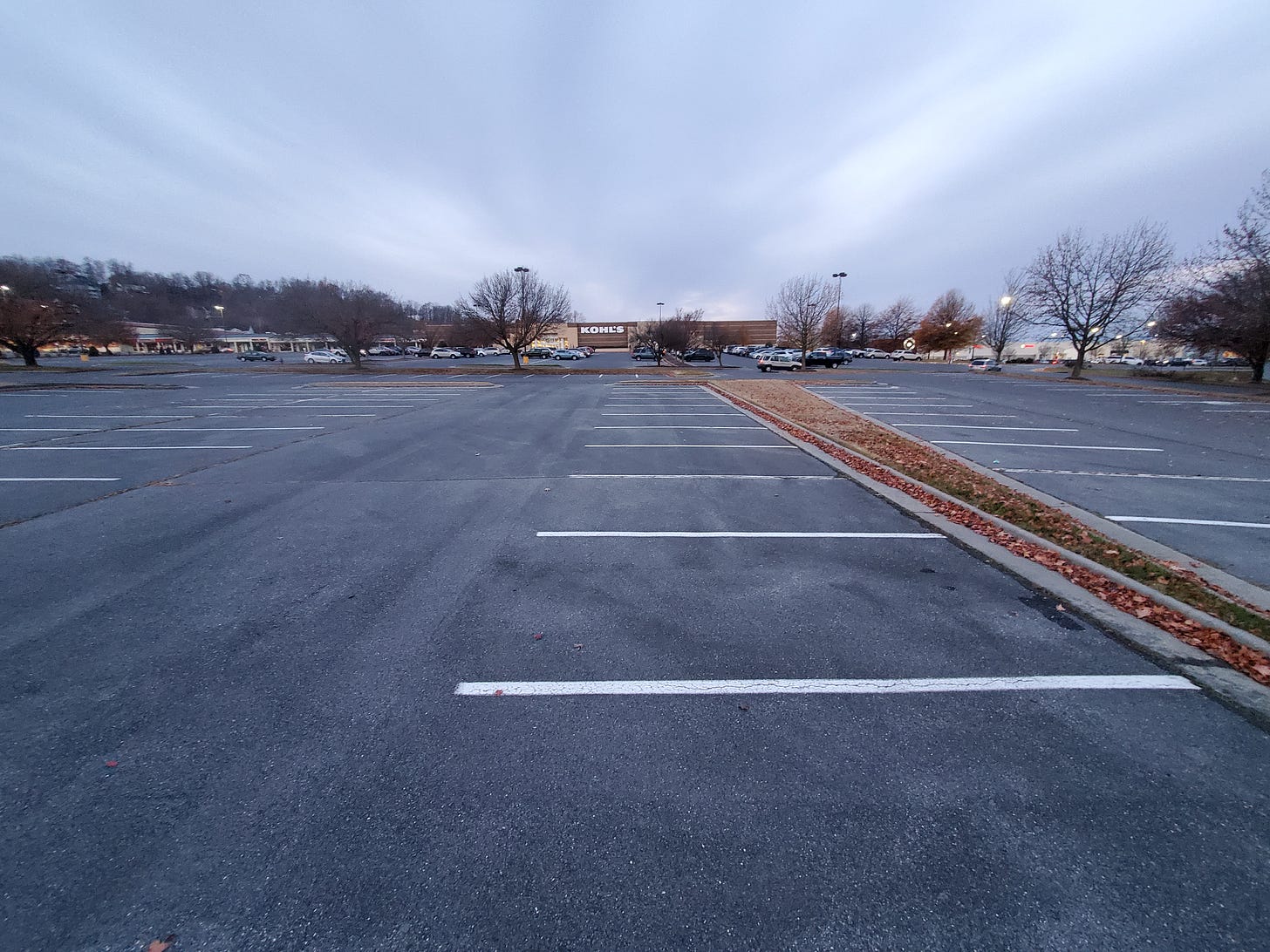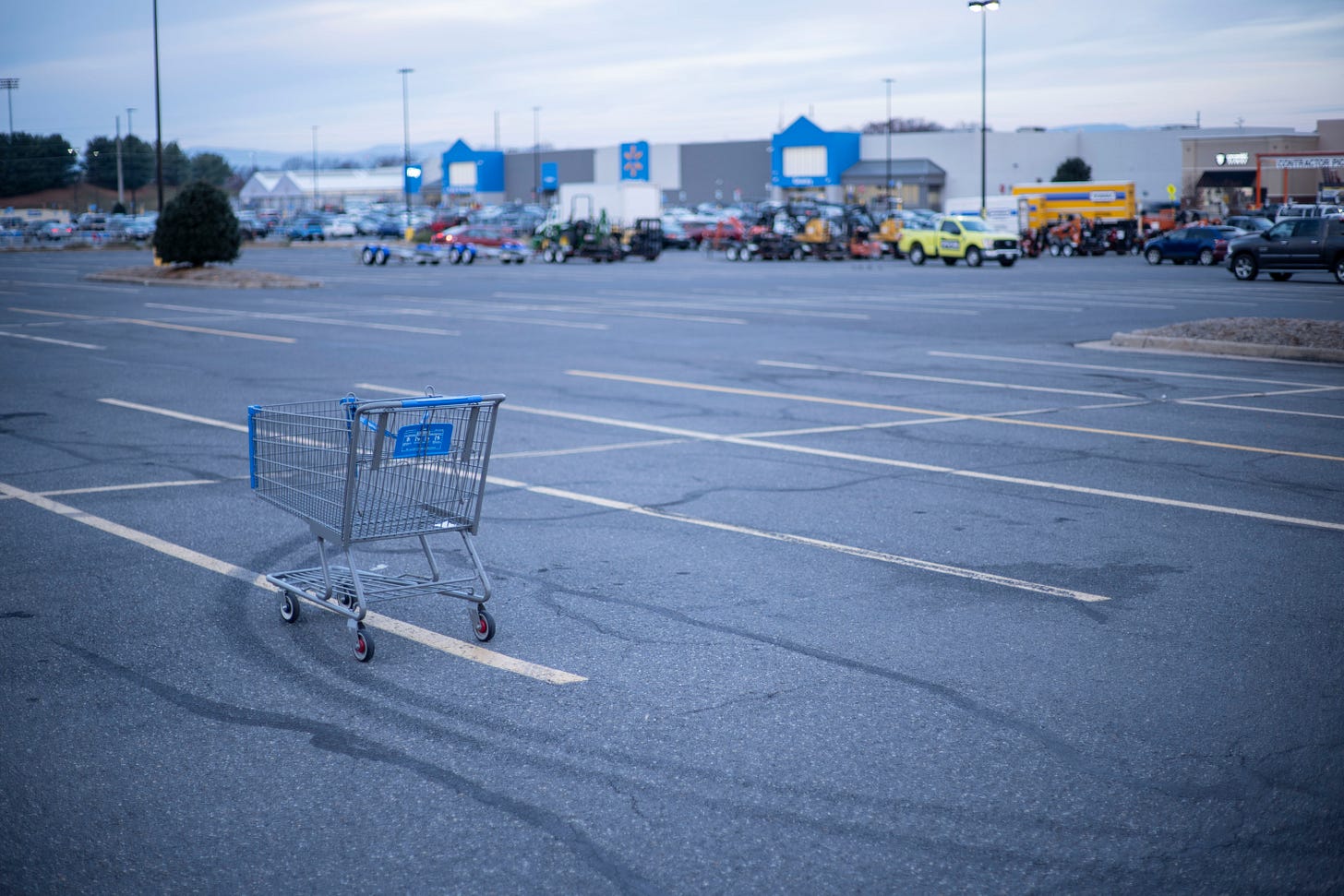Mostly-empty lots on Black Friday highlight overbuilt parking in Harrisonburg
On the busiest shopping day of the year, #BlackFridayParking reveals how off-street parking requirements have misallocated land use across our city.
Like most small North American cities, Harrisonburg has several large swaths of town dominated by strip malls, fast-food restaurants, and shopping centers with parking lots that are much larger than the brick-and-mortar buildings themselves. The land mass ratio of parking-to-building-footprint is striking. This seems odd, considering few of those parking lots ever seem to be full, even on the busiest shopping day of the year.
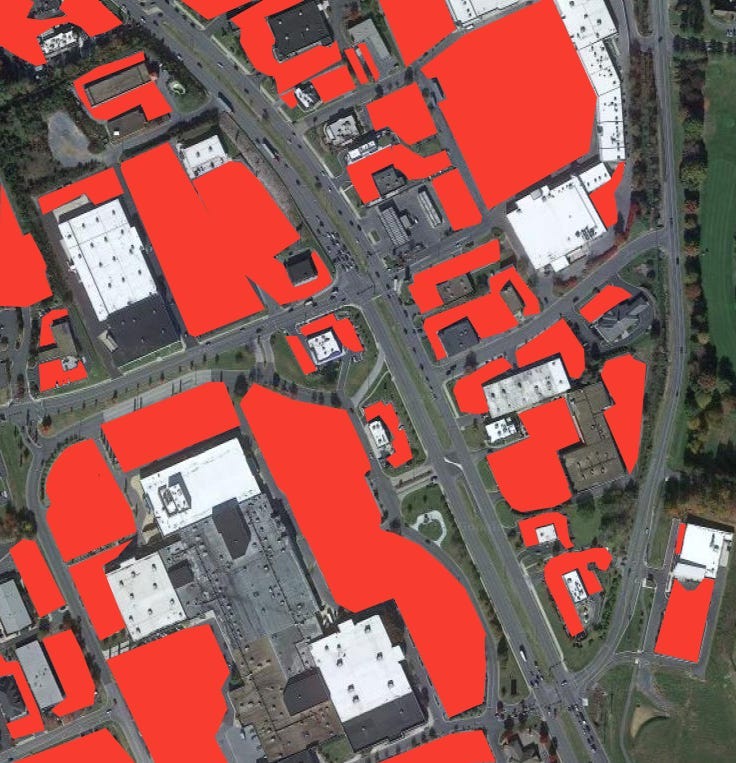
How did this happen? As more people bought and drove cars in the 30s, 40s, and 50s, our sense of entitlement to free and convenient parking grew. The issue was (and still is) the tremendous amount of land required to maneuver automobiles in and out of temporary storage spaces. For thousands of years, cities had developed in roughly the same manner; planning and building housing and businesses close together to serve pedestrians and accommodate horse-powered transportation. Within the first few decades of the 20th Century, however, cities were inundated with this new land-use-intensive personal transportation product that was growing in popularity.
City leaders came under increasing pressure from motorists to provide them with places to temporarily store their personal property in close proximity to popular destinations. Harrisonburg attempted to accommodate these demands, buying and demolishing buildings to create municipal parking lots downtown. But this only further induced demand. As more people bought cars with the expectation they would be able to park for free in convenient locations, conflicts escalated. By the early 1950s, the situation had reached “crisis” proportions.
“The automobile traffic and parking problem is of such magnitude that some people are ready to throw up their hands in surrender and call it insoluble. Perhaps it is, to a considerable extent, in the big cities. But it isn’t insoluble in cities the size of Harrisonburg … And it is pretty plain, in this automobile age, that the cities which do solve it will be well rewarded for their effort.” (Daily News Record, March 6, 1953)
Harrisonburg (and other North American cities) adopted off-street parking requirements to meet the growing demand for personal vehicle storage. These rules require developers to build a certain number of parking spots per unit; be it per apartment bedroom or per 1,000 square feet of a brick-and-mortar business.
City planners and elected leaders opted to make Harrisonburg conform to the new American planning orthodoxy: cities should adapt to automobiles, not the other way around. However, the ample parking that feels free is in fact being paid for by everyone, drivers and non-drivers alike. The cost of all that “free” parking is hidden in the increased price of goods and services, with detrimental knock-on effects for residents, businesses, and our planet.
Black Friday Parking
Decades later, here we are on Black Friday, the busiest shopping day of the year. If there’s any day the parking lots should be full, it’s today. Strong Towns created the #BlackFridayParking experiment to put parking requirements to the test and to demonstrate how parking minimums have led to overbuilt parking in cities and suburbs across the country. Here’s what the parking lots in Harrisonburg’s shopping district looked like this morning:
These pictures could have been taken in any one of thousands of identical strip malls across the country, evoking what James Howard Kunstler called “the geography of nowhere.” As for revenue, each individual parking space costs thousands of dollars to build, but because we don’t have a land value tax, parking lots don’t bring in tax revenue for the city. Parking is one of the least economically productive uses for urban land, and Harrisonburg has a glut of it.
It’s time for us to consider that designing our city entirely around the movement and storage of automobiles is not the highest and best use of limited and valuable land. We are under no obligation to stay on the car-dependent trajectory we are currently on. Harrisonburg residents deserve a city that centers and prioritizes people. We can plan and build more productive places that provide housing for people and reflect the natural beauty of the Shenandoah Valley. The sooner we can extricate ourselves from the notion that all drivers are rightfully entitled to “free” on-demand car storage — everywhere, all the time — the sooner we can take steps to redevelop some of that unused parking for much-needed housing.
We have an opportunity to reimagine what these strip malls could become in the future. Step one is recognizing the connection between parking requirements and affordable housing, and then working to change it. The good news is that eliminating parking minimums is something that can be changed at City Hall. The Parking Reform Network has good resources to help advocate for those changes.


